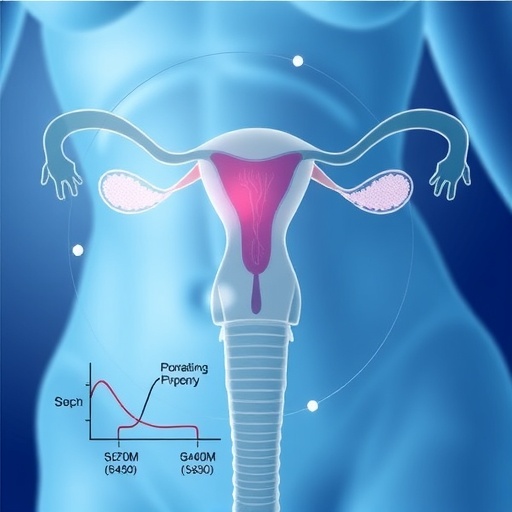In a groundbreaking study published in the Journal of Ovarian Research, researchers Hizal, Uyar, and Bingul delve into the complex interplay of antioxidant and anti-inflammatory mechanisms at play when ovarian tissues experience ischemia-reperfusion injury. Their investigation centers on the potential protective effects of vigabatrin, a drug traditionally used in the treatment of epilepsy, and how it may serve a dual purpose in safeguarding ovarian health. The study employed a rat model to recreate the conditions of ischemia-reperfusion injury, which is a scenario that often occurs during surgical procedures that temporarily cut off blood flow to the ovaries.
Ovarian ischemia-reperfusion injury is a significant concern in gynecological surgeries where the ovaries are subjected to decreased blood supply followed by a sudden restoration. This phenomenon can lead to substantial tissue damage and has been associated with severe complications such as infertility. The researchers aimed to explore how vigabatrin, through its unique pharmacological properties, could mitigate these detrimental effects. In essence, they proposed that the administration of vigabatrin prior to the induced ischemic event could bolster the body’s defense mechanisms against oxidative stress and inflammation.
The term “oxidative stress” refers to an imbalance between free radicals, which are unstable molecules that can cause cellular damage, and antioxidants that neutralize them. In the case of ovarian ischemia-reperfusion, the restoration of blood flow leads to a surge in free radicals, precipitating oxidative stress that damages cell membranes, proteins, and DNA. The study meticulously details how vigabatrin may influence antioxidant activity within ovarian tissue, thereby safeguarding cellular integrity and function during such stressful physiological events.
Additionally, the involvement of inflammatory responses cannot be overstated. Following an ischemic event, inflammatory pathways are activated, leading to the recruitment of immune cells to the site of injury. While inflammation serves as a natural healing response, excessive or uncontrolled inflammation can exacerbate tissue damage. The researchers examined the anti-inflammatory properties of vigabatrin, particularly its ability to temper the inflammatory response and diminish cytokine levels, which are signaling molecules that mediate and regulate immunity and inflammation.
By systematically investigating both antioxidant and anti-inflammatory pathways, the researchers aimed to provide a comprehensive understanding of how vigabatrin can serve as a multi-faceted intervention in protecting ovarian tissue. Their methodology included the careful assessment of biomarkers associated with oxidative stress and inflammation, thereby establishing a clear link between vigabatrin administration and the modulation of these pathological processes.
The findings from this study are expected to have far-reaching implications for clinical practice, particularly in fields related to reproductive health. With evidence suggesting that vigabatrin could offer protective benefits, clinicians may have a novel therapeutic option to consider for patients undergoing surgical interventions that involve the risk of ovarian ischemia-reperfusion injury. Furthermore, the possibility of repurposing existing medications like vigabatrin serves as a testament to the importance of drug discovery and development within modern medicine.
In addition to the potential clinical implications, the research also shines a light on the need for further studies to validate these preliminary findings. More extensive clinical trials are warranted to assess the safety and efficacy of vigabatrin in human populations, as well as to fully elucidate the mechanisms by which it exerts its protective effects. Understanding the precise biochemical pathways affected by vigabatrin may reveal additional therapeutic targets and enhance the overall management of ovarian health.
As scientists continue to unravel the complexities of ischemia-reperfusion injury and its implications for ovarian function, studies like this one lay the groundwork for innovative research and treatment strategies. The role of pharmacological intervention in this context underscores the potential for enhanced recovery and fertility preservation in women facing surgical interventions that threaten ovarian viability.
Moreover, the collaboration between researchers from various disciplines—ranging from pharmacology to reproductive biology—demonstrates the multidisciplinary approach required to tackle such intricate health issues. Through cooperative efforts, researchers can leverage different expertise to gain a holistic view of the effects of medications like vigabatrin in specialized areas of health.
In conclusion, the exploration into the antioxidant and anti-inflammatory mechanisms of vigabatrin presents a promising avenue for protecting ovarian tissues against ischemia-reperfusion injury. As the scientific community continues to investigate the multifactorial dimensions of reproductive health, findings such as those from Hizal et al. open new doors for understanding and managing conditions that affect women’s fertility and overall health.
In a rapidly evolving field, it is crucial for researchers to remain committed to uncovering the links between existing therapies and emerging health challenges. The implications of this research could revolutionize practices in gynecology, offering new hope for women subjected to the stressful environments of surgical procedures. As the quest for innovative treatments continues, insights gained from this study could serve as a catalyst for further advancements in reproductive medicine.
The journey ahead extends beyond acknowledging the protective effects of vigabatrin; it challenges the scientific community to remain vigilant in exploring the complex tapestry of interactions that govern ovarian health. Ultimately, the marriage of clinical insight and rigorous scientific inquiry will bolster efforts aimed at enhancing the quality of life for women facing the specter of reproductive health challenges.
Subject of Research: The role of antioxidant and anti-inflammatory mechanisms in the protective effects of vigabatrin against ovarian ischemia-reperfusion injury.
Article Title: The role of antioxidant and anti-inflammatory mechanisms in the protective effects of vigabatrin against ovarian ischemia-reperfusion injury in a rat model.
Article References: Hizal, E., Uyar, E., Bingul, E. et al. The role of antioxidant and anti-inflammatory mechanisms in the protective effects of vigabatrin against ovarian ischemia-reperfusion injury in a rat model. J Ovarian Res 18, 214 (2025). https://doi.org/10.1186/s13048-025-01794-0
Image Credits: AI Generated
DOI:
Keywords: Ovarian ischemia-reperfusion injury, vigabatrin, antioxidant mechanisms, anti-inflammatory mechanisms, reproductive health.




